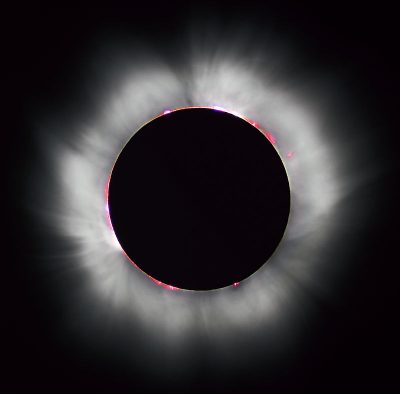Front Porch Blog

Photo by Luc Viatour / https://Lucnix.be
On August 21, a total solar eclipse will be visible from the continental United States for the first time in 38 years. Luckily for Appalachia, parts of Kentucky, Tennessee, North Carolina, South Carolina and Georgia will all be in the path of totality, the area where the shadow cast from the moon completely blocks out the sun.
Totality will last anywhere from around one minute to two minutes and forty seconds, depending on where you are (view state-by-state maps of where the path of totality will be). And while a partial eclipse can be seen from anywhere in the lower 48 states, you’re not going to want to miss the chance to see a total eclipse.
I’ll let this 1983 quote from American astronomer Jay M. Pasachoff explain what I mean:
“Some people see a partial eclipse and wonder why others talk so much about a total eclipse. Seeing a partial eclipse and saying that you have seen an eclipse is like standing outside an opera house and saying that you have seen the opera; in both cases, you have missed the main event.”
Only in totality will you be able to view the sun’s corona, the wispy atmospheric layer millions of degrees hotter than the sun’s surface. It will be dark enough to see Mercury, Venus, Mars, Jupiter and even a few stars during the eclipse.
You’ll also observe something interesting about your surroundings — thinking it’s nighttime, daytime creatures will prepare for sleep as nocturnal animals take their place for a few short minutes.
If you plan on driving to see the total eclipse, however, you may want to get an early start. Driving up I-75 and I-40 from Chattanooga to Knoxville this week, nearly every highway LED sign I saw warned of heavy traffic the day of the eclipse.
Another thing to keep in mind is eye protection. Before and after totality, viewing the eclipse will be just as dangerous as staring at the sun on a normal day — so make sure to grab a pair of eclipse glasses if you haven’t already. If you’re having trouble finding them in your area, this Washington Post article might help you out. And if you can’t find any glasses in your area, you can easily make a pinhole projector to view the eclipse indirectly until totality occurs, at which point you can safely view the sun.
Perhaps most importantly, put your camera down or set it up remotely so you aren’t distracted by what’s right in front of you. You’ll be glad you did.
For more information on Monday’s eclipse, visit eclipse2017.org.
PREVIOUS
NEXT

Leave a comment
Your email address will not be published. Required fields are marked *

Leave a Comment